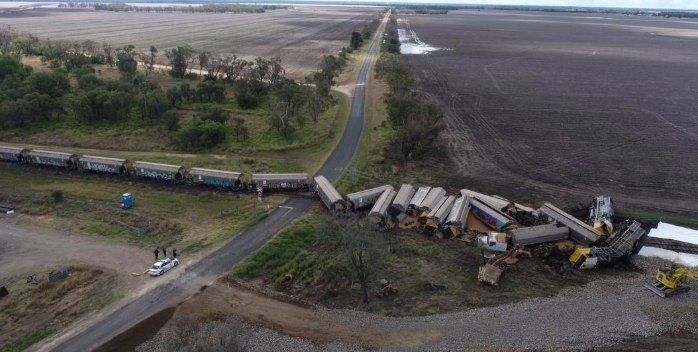Lessons Learned: Expectation Bias

A truck driver who failed to stop before a level crossing collision in southern Queensland was probably influenced by expectation bias.
The driver of the truck had likely never seen a train at a crossing in the past, an ATSB (Australian Transport Safety Bureau) investigation has concluded.
On May 23, 2024, a prime mover hauling a skid steer was about 50 m north of Gooray Road level crossing, near Goondiwindi, when the truck driver saw a train approaching from the west and utilized expectation bias rather than procedures/rules, teachings, or common sense.
As he was using expectation bias, his assumption informed him that the vehicle could not stop in time, so the truck driver accelerated, but was unable to clear the crossing before the train collided with the truck’s trailer.
The truck driver and two train drivers were seriously injured in the collision, which also destroyed the train’s two locomotives and 12 grain hoppers, and the truck’s prime mover and low-load trailer.
“Due to the infrequency of trains on that corridor, it is likely the truck driver had not seen a train at that crossing in the past,” ATSB Director Transport Safety Stuart Macleod said.
“This created an expectation bias which probably reduced the effectiveness of the truck driver’s scan while approaching the crossing.
“Nonetheless, the signage instructed the driver to stop at the crossing, and the driver did not comply with this requirement.”
The ATSB found the configuration of the crossing provided appropriate signage and stopping distance for a road vehicle driver to notice the passive level crossing controls, and bring the vehicle to a controlled stop – as directed by the signage – before the level crossing.
“Once stopped, there is adequate visibility for a driver to sight a train and give way,” Mr. Macleod said.
In addition to the ATSB’s assessment and after the accident, Queensland Rail initiated its own assessment based on the Australian Level Crossing Assessment Model (ALCAM).
“The ALCAM assessment determined there were no obstacles to sighting distances or the visibility of signage,” Mr. Macleod noted.
The ATSB’s report notes the Office of the National Rail Safety Regulator, in its own review, identified the advance warning signs on the northern side of the crossing were in the incorrect order, and Goondiwindi Regional Council advised it would schedule works to alter the order of the signs.
Additionally, the ALCAM assessment found an advanced warning sign was lacking on the southern side of the crossing – the opposite direction to the one used by the truck in this accident.
Mr. Macleod said the accident demonstrates the limitations of passive controls at level crossings, where the onus is on road users to follow these controls – making them particularly vulnerable to unintentional driver error, or intentional driver decisions.
“This accident highlights how expectation bias can influence driver behaviors when negotiating passive level crossings,” Mr. Macleod said.
“Passive controls are common at level crossings where road and rail traffic volumes are low, and it is unlikely most road users will encounter a train at such a crossing.
“As road users become familiar with a level crossing where they have not previously encountered trains, they can unconsciously form an expectation that no trains will be present every time they approach that crossing.
“It is therefore crucial that road users remain cognizant of the potential presence of trains at every level crossing, and are mindful of the consequences of a collision such as this one.”
Read the report: Level crossing collision between freight train 6839 and truck, Gooray Road, Gooray, Queensland, on May 23, 2024, publication date, 12/19/2024



